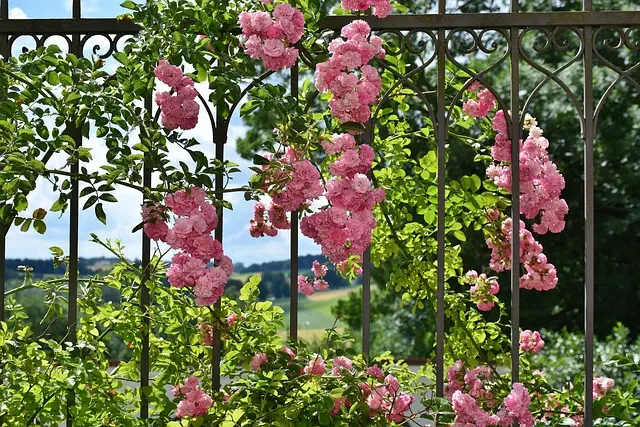The Kratom tree (Mitragyna speciosa) is a striking, tall tropical plant native to Southeast Asia, growing up to 15 meters high. It's recognized for its broad, glossy green leaves, white flower clusters, and dense shade-loving canopy. "What does a kratom tree look like?" is easily answered by these unique visual characteristics.
“Discovering Green Hulu Kratom Extract: A Botanical Journey
Kratom, derived from the tropical Mitragyna speciosa tree, has captivated users worldwide. This article delves into the captivating world of Green Hulu Kratom Extract, exploring its unique origins and visual allure. We’ll guide you through the kratom tree’s botanical overview, from its lush foliage to its global reach. Learn about the meticulous extraction process and uncover the chemical composition that sets Green Hulu apart. Additionally, we’ll explore the cultural significance behind the tree’s appearance, shedding light on why ‘what does a kratom tree look like’ is more than just a question of aesthetics.”
- The Kratom Tree: A Botanical Overview
- – Description and appearance of the kratom tree (Mitragyna speciosa)
- – Geographical distribution and natural habitat
The Kratom Tree: A Botanical Overview
The Kratom tree, known scientifically as Mitragyna speciosa, is a majestic plant that thrives in tropical regions, particularly in Southeast Asia. This evergreen tree can grow up to 15 meters tall, boasting broad leaves and a robust stem. Its distinctive appearance is characterized by a spreading canopy of lush foliage, creating a dense shade below. The leaves are typically oval-shaped with slightly serrated edges, ranging from bright green to a darker, almost emerald hue.
What does a kratom tree look like? At the base of the tree, you’ll find thick, rough bark that provides protection against environmental factors. The bark is often a deep brown or gray color, adding texture to the overall structure. Flowers, though rare, bloom in clusters and display a vibrant array of colors, contributing to the tree’s aesthetic appeal. This versatile plant not only holds cultural significance but also offers a unique blend of compounds, making it the source of the popular extract known as Green Hulu Kratom.
– Description and appearance of the kratom tree (Mitragyna speciosa)
The kratom tree, scientifically known as Mitragyna speciosa, is a lush, tropical plant native to Southeast Asia, particularly prevalent in regions like Thailand and Malaysia. This tree can grow up to 25 meters tall with a robust, spreading canopy, making it a dominant feature of its habitat. Its leaves are compound, meaning they consist of multiple smaller leaflets arranged oppositely on the stem. The leaf structure is one of the most recognizable features of the kratom tree, contributing to its unique appearance.
The tree’s appearance is characterized by its deep green, glossy leaves that can measure anywhere from 5 to 10 centimeters in length. During the flowering season, it produces small, white flowers that bloom in clusters, adding a delicate touch to its otherwise robust form. The bark of the kratom tree is usually dark gray to brown, and it’s covered in fine hair when young, becoming smoother as the tree matures. This tree’s visual appeal and distinctive features make it easily recognizable in its native tropical settings.
– Geographical distribution and natural habitat
The kratom plant, scientifically known as Mitragyna speciosa, thrives in tropical regions with warm and humid climates, particularly in Southeast Asia, including countries like Thailand, Malaysia, and Indonesia. This lush greenery is a staple of its native landscape, growing as a robust, tall shrub or small tree that can reach up to 15 meters in height. The kratom tree has distinctive features: it possesses broad, palm-like leaves arranged in an alternating pattern along the stem. Its flowers are typically small and white, growing in clusters, adding a delicate touch to its overall appearance.
These trees often grow naturally in dense forests, preferring shaded areas under larger canopy trees. They can also be found in smaller numbers alongside rivers and streams, taking advantage of the moist environments these water bodies provide. The kratom tree’s geographical distribution is closely tied to its natural habitat, which demands specific environmental conditions for optimal growth, contributing to its unique character and the specialized uses it holds, including both traditional medicinal practices and modern applications like green Hulu Kratom Extract.
The Kratom tree, scientifically known as Mitragyna speciosa, is a vibrant and robust plant with significant cultural and medicinal importance. Its distinct appearance, characterized by large compound leaves and unique flower clusters, sets it apart in its natural habitat, primarily tropical forests. Understanding what a kratom tree looks like is essential for both enthusiasts and researchers, as it forms the basis for extracting valuable compounds like green Hulu Kratom extract, renowned for its potential therapeutic benefits. This botanical exploration highlights the beauty and utility of this remarkable plant.






